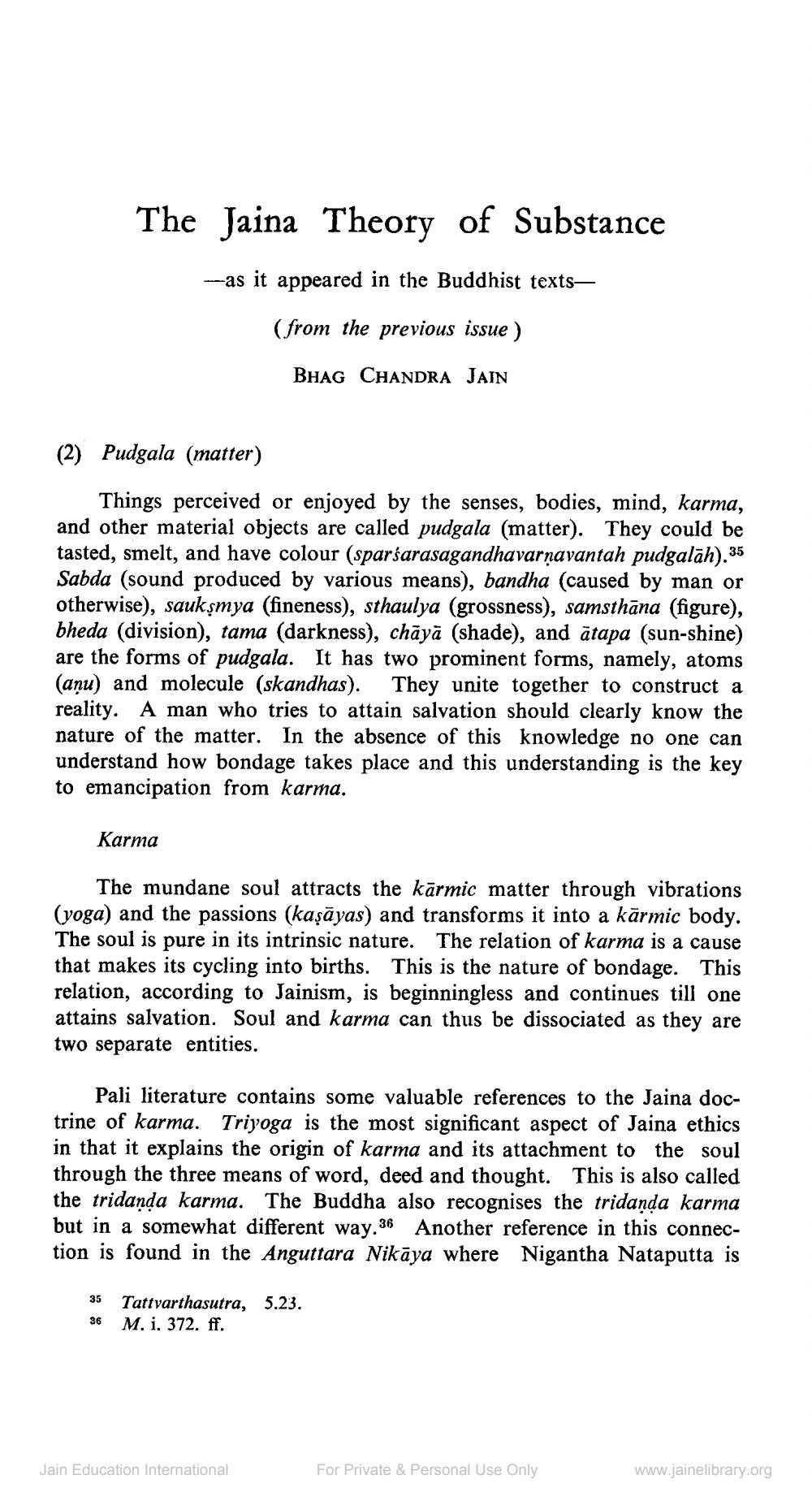________________
The Jaina Theory of Substance
--as it appeared in the Buddhist texts—
(from the previous issue )
BHAG CHANDRA JAIN
(2) Pudgala (matter)
Things perceived or enjoyed by the senses, bodies, mind, karma, and other material objects are called pudgala (matter). They could be tasted, smelt, and have colour (sparśarasagandhavarşavantah pudgalāh).35 Sabda (sound produced by various means), bandha (caused by man or otherwise), saukṣmya (fineness), sthaulya (grossness), samsthāna (figure), bheda (division), tama (darkness), chāyā (shade), and ātapa (sun-shine) are the forms of pudgala. It has two prominent forms, namely, atoms (anu) and molecule (skandhas). They unite together to construct a reality. A man who tries to attain salvation should clearly know the nature of the matter. In the absence of this knowledge no one can understand how bondage takes place and this understanding is the key to emancipation from karma.
Karma
The mundane soul attracts the kārmic matter through vibrations (yoga) and the passions (kaşāyas) and transforms it into a kārmic body. The soul is pure in its intrinsic nature. The relation of karma is a cause that makes its cycling into births. This is the nature of bondage. This relation, according to Jainism, is beginningless and continues till one attains salvation. Soul and karma can thus be dissociated as they are two separate entities.
Pali literature contains some valuable references to the Jaina doctrine of karma. Triyoga is the most significant aspect of Jaina ethics in that it explains the origin of karma and its attachment to the soul through the three means of word, deed and thought. This is also called the tridanda karma. The Buddha also recognises the tridanda karma but in a somewhat different way. 36 Another reference in this connection is found in the Anguttara Nikāya where Nigantha Nataputta is
35 36
Tattvarthasutra, 5.23. M. i. 372. ff.
Jain Education International
For Private & Personal Use Only
www.jainelibrary.org




